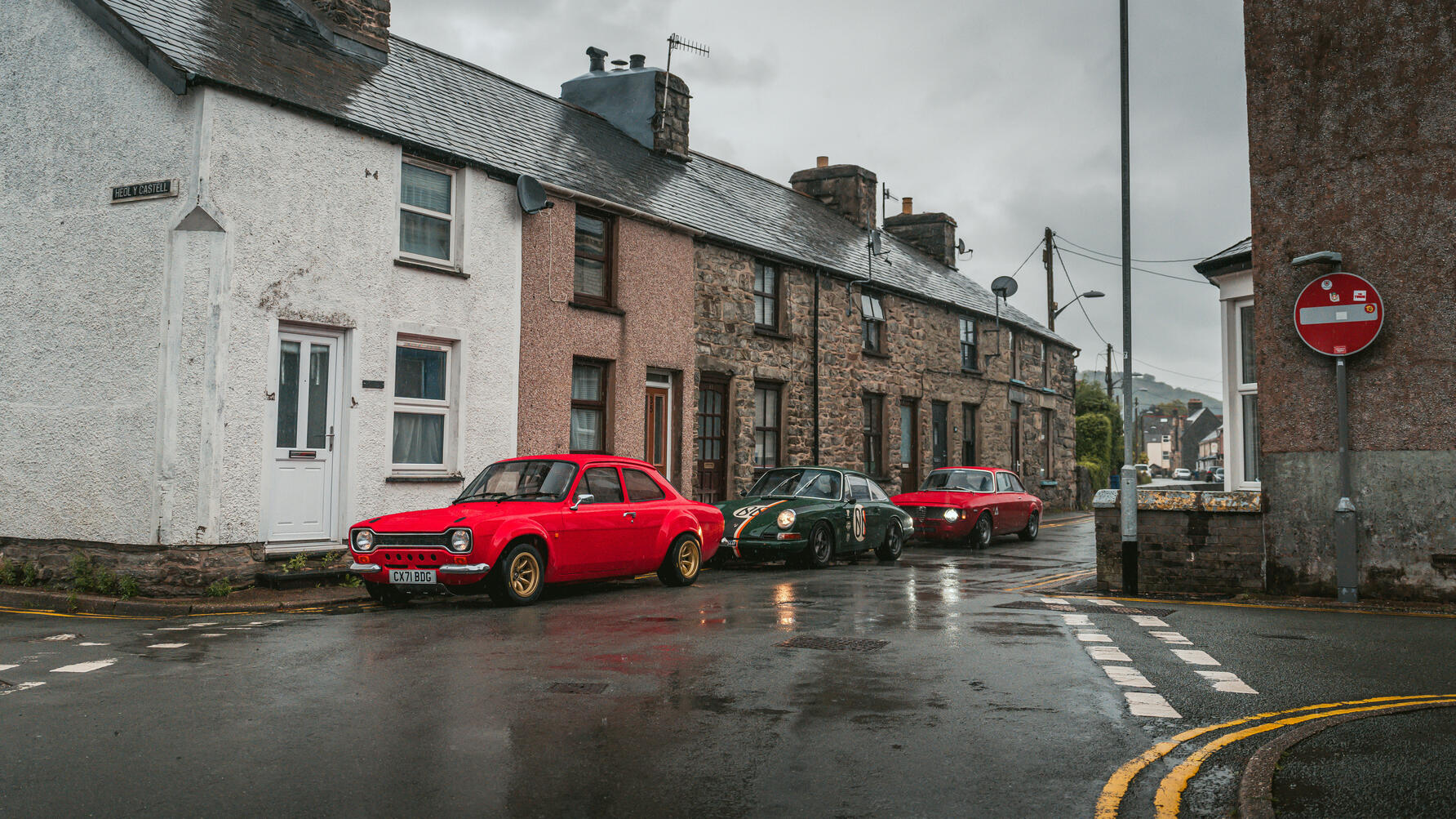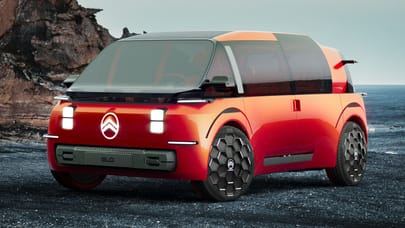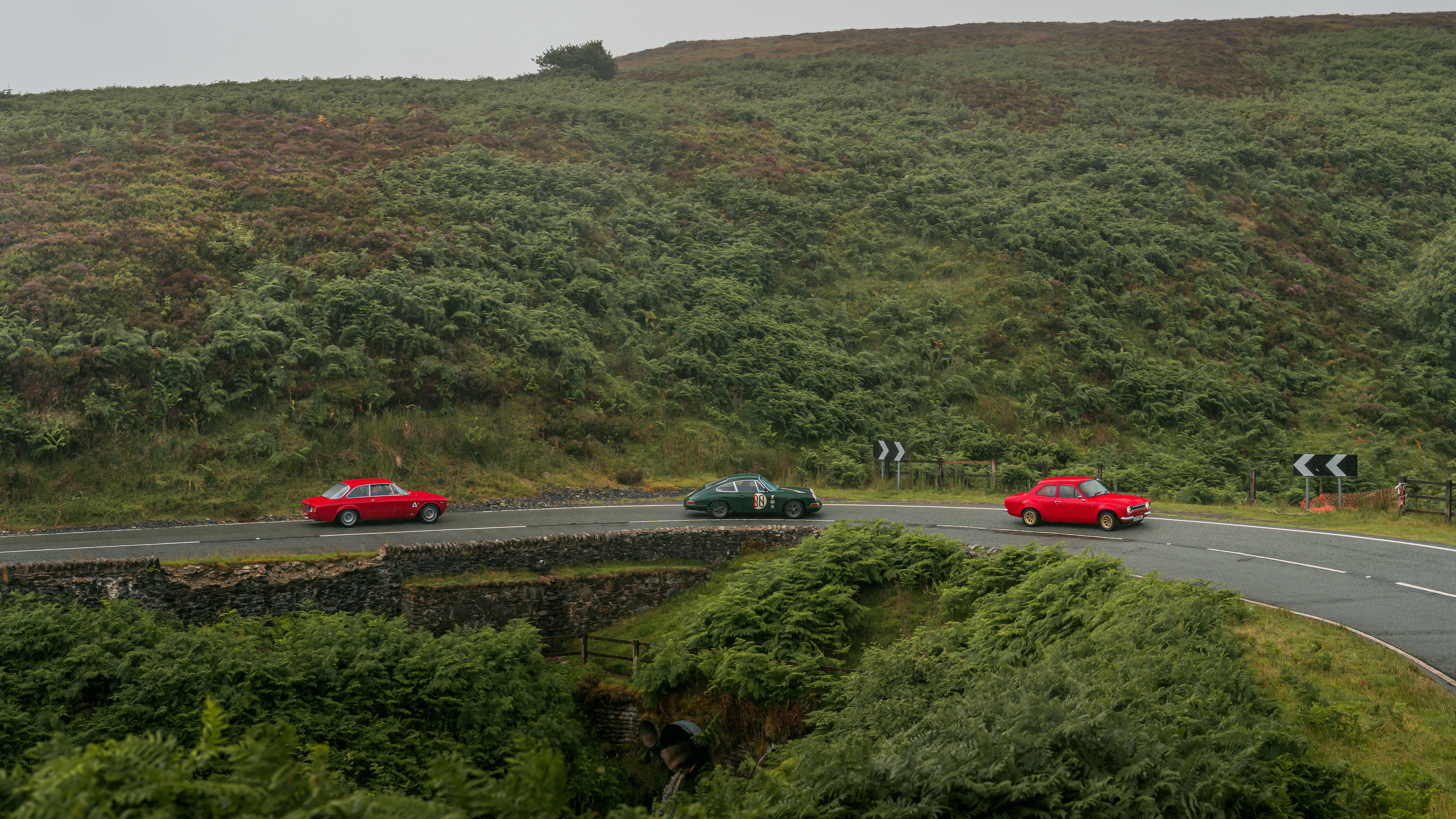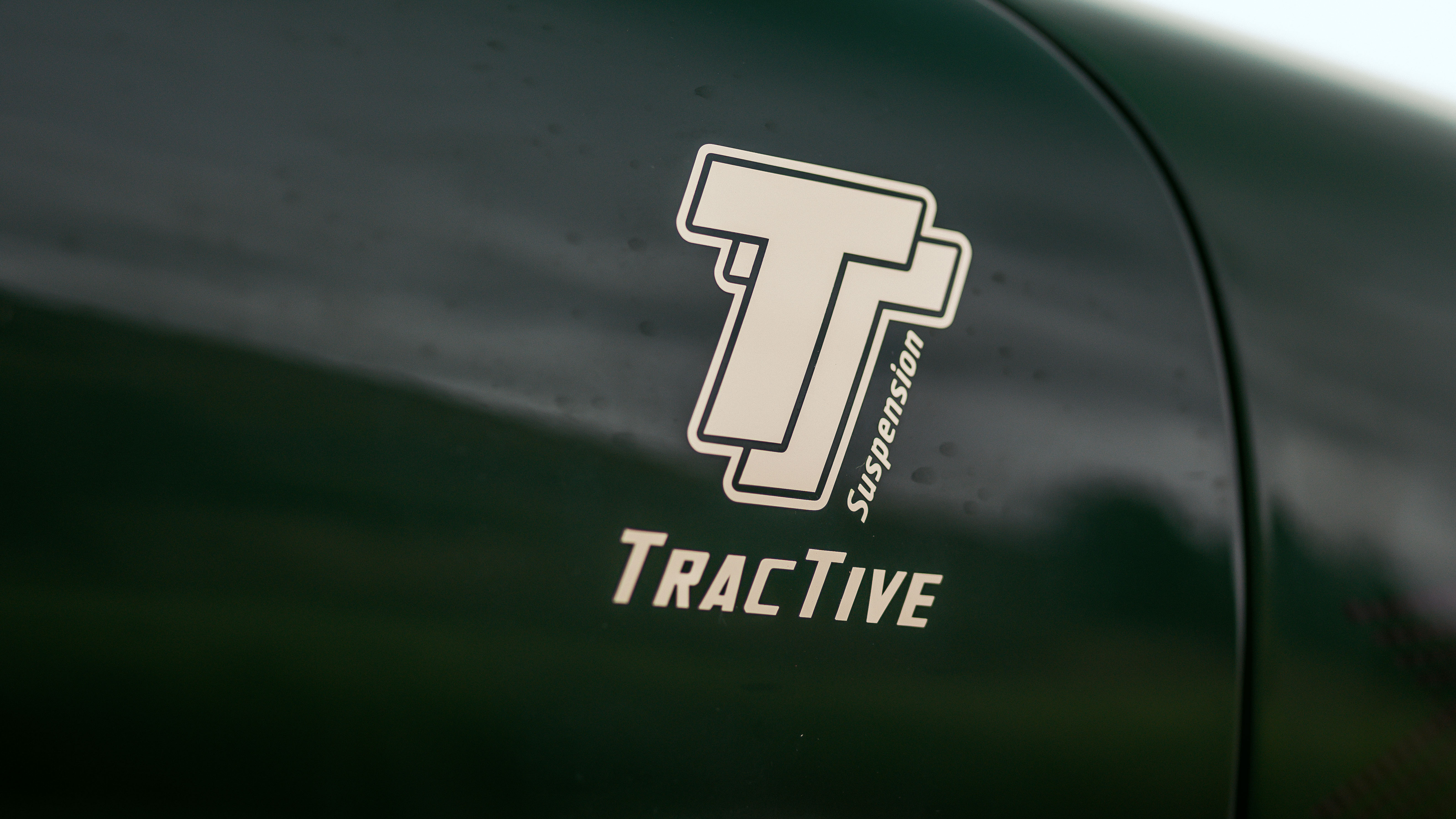
Celebrating the four-cylinder: Kamm 912, Alfaholics GTA-R and the MST Escort
Think the humble four-cylinder only belongs in drab, cookie cutter crossovers? These three restomods would like a word...
And sometimes you just want to stand on a hillside and listen. Most of the time it’s about driving isn’t it? But sometimes the view from outside is better, so I’m going to use that to tell you about the comings and goings of exciting engines. Both historically and physically. Because the coming is better, isn't it?
Thank our appetite for anticipation. For instance, how excited have we all been for the past few years about the T.50’s 4.0-litre Cosworth V12? We’ve revelled in the spec, heard its heartbeat, and all that before I labelled it “the best road car engine I’ve ever used”. Well, I hate to point this out but although it’s here now, one day it will go. The engines lurking in these three pristine engine bays went long ago.
Right now I’m enjoying the second coming. A literal arrival. I can only just hear it, a distant bark billowing between gusts of wind, sound waves sneaking past the waving treetops. Then closer, gnashing cylinders only a couple of curves away, more clarity and volume. I know those corners, so can read the aural signature in the throttle inputs, the eager way the motor responds. Then the Escort rips into view. It sounds absolutely furious now. The note is hard, direct, intimidating. “I’m coming for you” it seems to say, this wheeled headbutt heading your way. It’s a noise far bigger than the car itself, a noise that doesn’t look like it could possibly have fitted behind that beady front end.
Photography: Mark Riccioni
It passes cartoonishly, like a frantic gargling air horn, squatted hard down with little gold wheels tucked tight up inside puffy rear arches. The noise diminishes almost at once, because this is another thing about the comings and goings of great engines. Coming tunes are better than going tunes. Know what I mean? Exhausts are all farty fakery these days, but intake noise, decibels that have fought against the flow to bring you a song direct from the manifold and cylinder heads? That right there is the essence of engine noise.
You don’t get it anymore, that’s the truth. Modern engines have to do so much with the air before it goes near a combustion chamber, and even more after it, that what they’re left with is anaemic. So they’ve had to resort to faking it. Piping it in, fitting baffles and bypass valves in the (largely forlorn) hope that they’re creating charisma.
I don’t think any of them, no matter how many cylinders they have, has an induction noise as blood curdling as this Escort. But let’s wave it a temporary farewell from our Welsh hillside as it projects its voice into the next valley and tell you why we have these three together. Because it’s not just about noise, it’s about engines – and one engine in particular. The plainest, beigest engine of them all. The four cylinder.
You don’t need me to tell you that the four cylinder is what powers ordinary cars, cars that are only petrol powered at all because they haven’t yet gone electric. But that wasn’t always the case. Modern cars have got bigger and heavier (and, yes, cleaner and safer), ergo they require bigger, heavier engines. The last properly fizzy four must’ve died about a decade ago with the final naturally aspirated Civic Type R.
Nowadays the sporting four has largely been abandoned. Sure, Porsche had a stab at a turbocharged flat four for the 718, but it sounds flaccid and crude compared with the previous six. There’s a naturally aspirated 2.4 in the Toyota GR86, but people praise its torque delivery, not its sound, response and charisma. The fizziest four left must be the ludicrously complex unit in the nose of the Mercedes-AMG A45 S. That’s possibly the sole car that genuinely still celebrates its four-ness, rather than choosing it because a six wouldn’t fit or emissions were better or because it was already in a base car and they could fit a bigger turbo. We now tend to scorn four cylinders, our attention drawn to bigger capacity, more exotic layouts developing towering figures. But fizzy fours were what made the world go around, so I want to tell you the stories of three of them. And we’re going to start with that Ford Escort.
Back in the Seventies, the barriers between happy shopper and motorsport were paper thin. Ford asked Cosworth to develop a new sports engine for the Escort, its aim to deliver better performance than the Lotus-Ford Twin Cam. Cosworth was mainly doing race engines, so it took Ford’s 1.6 Kent iron block and fitted it with a cylinder head based on the renowned DFV V8 F1 racing engine. It developed 120bhp and was called the BDA – BD stood for belt-drive, A because it was the first.
Ford took it rallying and development really took off. In fact having started in 1969, it didn’t stop until 1986 – the same basic engine, now a turbocharged 1.8, was found in the RS200 Group B car. But its heyday was the mid-Seventies. The MkI Escort you see here uses a BDG: 2.0-litre, Jenvey throttle bodies, running modern fuel injection and ECU and delivering 250bhp on its way to a howling 9,000rpm cutoff.
It’s the work of MST cars, a long-established Welsh rally parts business which worked out it had all the parts and expertise necessary to build an entire car from scratch. Which is why it wears a new numberplate. It’s not trying to recreate the past so much as recreate an experience, so it doesn’t abstain from screens inside – there’s even Bluetooth. But mainly the cabin urges you to drive. The deep dish steering wheel juts pugnaciously out, the bucket seat tilts you upright, and that’s you, ready to go. Treat it like a rally car: grab gears, grab it by the scruff and hurl it about. It revels in punishment and abuse. You get the feeling it would be one of those cars where something would only go wrong if it was driven gently. But you’d never do that, because the take no prisoners Escort is one of the most addictive driving experiences around.
Top Gear
Newsletter
Thank you for subscribing to our newsletter. Look out for your regular round-up of news, reviews and offers in your inbox.
Get all the latest news, reviews and exclusives, direct to your inbox.
The steering is fast, sharp and accurate, the gearlever is breathtakingly mechanical and the front is stiffer than the back, so you’ve got this wonderfully tight, accurate nose and then a rear axle that rolls, edges out and is ever eager to be provoked into oversteer and driven with a bit of angle. And all the while the BDG snarls up front, and boy is it hard to resist its call.
But now it’s time to go even further back. In the mid-Sixties Porsche planned to discontinue the 356, but that left a hole below the bigger, more expensive six cylinder 911. The answer: slot the 356’s flat four engine into the 911 and call it the 912. The compression ratio was lowered, Solex carbs fitted and it produced 5bhp less (90bhp, rather than 95), but torque arrived lower down. The 912 was a massive hit when it arrived in 1965, 32,000 were built over four years, outselling the 911, but in 1969 it was all over – the production line was to be used to build a new joint venture between Porsche and VW, a car that would essentially replace the 912, the mid-engined 914.
That engine traces its roots back almost 100 years to the flat four VWs of the Thirties, but the work that’s been done by Hungarian firm Kamm Manufaktur is bang up to date. The basic engine block is carried over, but that’s bored and stroked out to 2.0 litres, equipped with fuel injection and throttle bodies, revs past 7,000 and now develops 190bhp.
Treat it like a rally car: grab gears, grab it by the scruff and hurl it about. It revels in punishment and abuse
But it can’t quite disguise the fact this is an old engine. You feel each cylinder pulse at low revs, it labours and doesn’t pick up anything like as eagerly as the others here. Until it gets to 5,000rpm, at which point it fires off to the 7,000rpm cutout like a GT3 – and as the sound pulses condense it smooths out and feels more like the six we know and love.
This is a prototype, the first Kamm has built and it’s a little mismatched. The engine is happiest at high revs, but using them is difficult because the gearing is GT-ishly long with big gaps between the five ratios. Softer springs are going to be fitted, currently the ride is stilted and jittery and doesn’t allow enough movement for the adaptive TracTive suspension to show what it can do. However, it is fabulously light, just 750kg thanks to extensive carbon use and lightweighting. Kamm founder Miklós Kázmér reckons the four cylinder saves 120kg in total over the six, much of it from behind the rear axle. And that means interesting things for the chassis balance. Turn in is sharp, but the back axle is much more faithful to what’s going on up front than an old 911 where the mallet weight distribution makes it trickier to manage.
Porsche might be synonymous with boxer engine layouts, but Alfa Romeo has made another engine technology its own: the twin spark engine. Two spark plugs per cylinder is a packaging nightmare, but allows the fuel to burn leaner and faster. Alfa first developed it for the 40/60 GP in 1914, an idea way ahead of its time. It was resurrected in the Sixties by Alfa’s Autodelta racing division, which uprated the 1600 twin cam engine with bigger carbs and this ‘Twinplug’ system. Power shot up from 105 to 170bhp. The little Series 105 Giulia it was fitted in became the toast of touring car racing, and the GTA road version, although less powerful at 113bhp, was almost as exotic, featuring magnesium wheels, plastic windows and aluminium, not steel, body panels. It weighed 740kg.
It’s this model that’s the inspiration for the Alfaholics GTA-R. But here the Twin Spark engine has been bored and stroked out to 2.3 litres, yielding 240bhp and 200lb ft, and as a result the GTA-R is every inch the authentic Sixties racing Alfa. You sit a long way back in the chassis, bum almost on the back axle, relaxing into a barrel shaped seatback. The wheel and gearlever project out to you and the engine fires smoothly, with little hint of the rasping character that’s revealed as the revs rise.

Welcome to driving addiction. The Alfa grabs you within moments and never lets go. Forever after there will be the Times Before I Drove the Alfaholics GTA-R and the Times After. Eagerness is its main trait, and you find it everywhere. In the terrier-like way it snaffles into corners, in the drop of the gearlever from third to fourth, and chiefly in that infectious engine. It permeates the whole car, so much noise, so much agitation, so much response and bite. This little four is as indulgent and richly textured as any multicylinder masterpiece Italy has produced.
No matter how dull the day, this is driving with the brightness turned up. It applies to all of them. They’re tiny and narrow, so we barrel along in convoy over Welsh moors each with room to play and they’re light, so they squirm and buffet and move amusingly. None is really a car for long distances. The Escort emphatically isn’t. All it wants to do is rampage across country, attack, attack, attack. You drive with teeth gritted and your eyes on stalks like Gilles Panizzi. MST will do you a carbon bodied car weighing 100kg less and fit a Millington Diamond engine with 100bhp more. The mind boggles. It looks divine tearing through Wales, 13in wheels paddling the ground. All that’s missing is the machine gun rattle of gravel pinging off the underside. The Alfa is no slower, but it’s more nuanced and cultured, the twin cam four is more musical, feedback is more sumptuous, you get more from it when you’re not howling around.
They are both standout talents from firms that understand their products through decades of familiarity, trial and error and hard work. The 912C doesn’t have such a clear idea of itself or what it’s for. That will probably come in time, but right now it feels like one man’s idea of his ultimate 912, rather than a sympathetic upgrading of the original. You have to work for your speed and the rewards aren’t as great.
But what a trio they make. We stop and open their stark, immaculate engine bays, bowing over them as if paying our respects, staggered at the lack of pipework, plastic covers and wiring. The humble four, living its best life. Of course there’s nothing humble about the costs involved. A full house GTA-R is around £450k, the carbon-bodied Kamm only about £100k less. The Escort costs the difference between them and looks good value in comparison. They’re supercar money and they don’t deliver supercar speed. Couldn’t care less. These are four cylinder engines with more heart, soul, tunefulness, effortless charisma and soaring passion than anything this side of seven figures. You don’t need to own one anyway. Just stand on a hillside and listen.
Trending this week
- Car Review
BMW 1 Series











